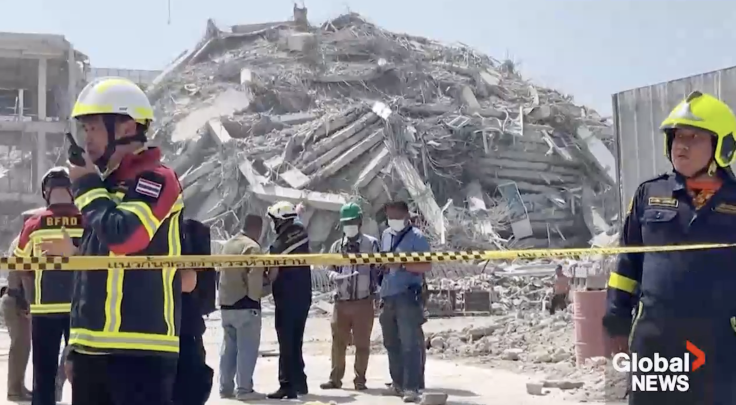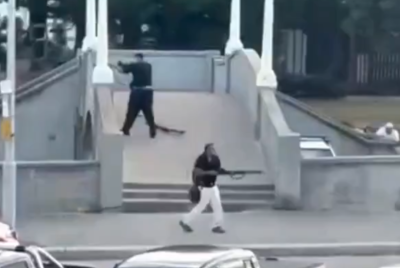Over 150 Confirmed Dead as Thailand Rocked by Most Powerful Earthquake In 200 Years

More than 150 people have been confirmed dead in Thailand after a powerful 7.7-magnitude earthquake—the strongest to strike the country in two centuries—sent buildings crashing to the ground and triggered widespread panic across Southeast Asia.
At least ten people were killed in Bangkok alone, where a high-rise building under construction collapsed during the tremors, burying workers beneath tonnes of concrete and steel. According to Daily Mail, around 101 people remain missing from three major construction sites, with emergency teams working around the clock in a desperate bid to locate survivors.
The quake, which struck near Mandalay in neighbouring Myanmar just after 1:20pm local time, also left a devastating trail of destruction there. The Myanmar government has confirmed at least 144 deaths and more than 700 people injured, while warning that the final toll could be far higher.
Bangkok in Chaos as High-Rise Collapses
In the Thai capital, scenes of chaos unfolded as terrified residents fled swaying skyscrapers. A 30-storey building under construction in the Chatuchak area collapsed entirely, with cranes and diggers deployed to sift through a mountain of rubble reportedly ten storeys high.
Thai Deputy Prime Minister Anutin Charnvirakul said the death toll in Bangkok could rise significantly as bodies are still being recovered. He confirmed that 16 others have been injured, many of them critically.
Eyewitnesses described scenes of horror as clouds of dust and falling debris swept through the streets. Chelsea King, a British expat living in the capital, said people ran out of hotels in bathrobes and swimming costumes as water from rooftop pools poured down onto the pavements. 'It felt like something out of a disaster film,' she told MailOnline.
Another witness, Worapat Sukthai of the Bang Sue district police, said: 'I heard people calling for help, saying "help me". I fear many lives have been lost. We have never experienced an earthquake with such a devastating impact before.'
Thai Government Urges Calm Amid Fears of Aftershocks
Prime Minister Paetongtarn Shinawatra has urged the public to remain calm and rely on official updates, as aftershock alerts remain in place. According to Bangkok Post, she is personally overseeing rescue efforts and has designated state broadcaster NBT as the channel for verified information.
Officials from Thailand's Mineral Resources Department have ruled out the threat of a tsunami, noting the epicentre was far from the sea. However, Director-General Pichit Sombatmak warned that aftershocks may still cause further damage.
Emergency crews, including military K-9 units, continue to search for survivors as hopes fade for those trapped beneath the wreckage. The greater Bangkok area, home to over 17 million people, has declared a state of disaster to facilitate rescue operations.
Myanmar Devastated as Casualties Mount
Across the border, Myanmar has declared a state of emergency in five regions, including Mandalay and Bago, following widespread destruction. According to Daily Mail, entire monasteries, schools, bridges and hospitals have collapsed. A dam burst in Mandalay has raised fears of catastrophic flooding in lowland areas.
Local rescue groups say more than 60 bodies have already been pulled from the rubble in Pyinmanar alone, with thousands more believed to be trapped. Myanmar's military leader, Senior General Min Aung Hlaing, warned during a televised address that the death toll is expected to rise and that urgent international assistance is needed.
The United Nations has allocated over £4 million ($5 million) in emergency aid. The World Health Organization has also activated its emergency response unit, warning of a 'very big threat to life and health'.
Scientists Warn of Further Risk
Seismologists believe the 7.7-magnitude quake is the most powerful to strike the region since the 1839 Ava earthquake. The US Geological Survey has warned that the final death toll could be between 10,000 and 100,000 due to the high population density and poor infrastructure in many affected areas.
Professor Ian Main of the University of Edinburgh said: 'The damage is likely to be very severe near the epicentre—based on ground shaking intensity and population vulnerability.'
Back in Bangkok, thousands of residents remain displaced, unable to return to homes due to structural damage. Public transport, including the BTS and MRT systems, has been shut down, and outbound flights are delayed or suspended.
As night fell, rescue workers continued to battle against time. The image of a high-rise reduced to rubble in the heart of a major world city is already being described as a symbol of one of Southeast Asia's worst natural disasters in living memory.
© Copyright IBTimes 2025. All rights reserved.




















